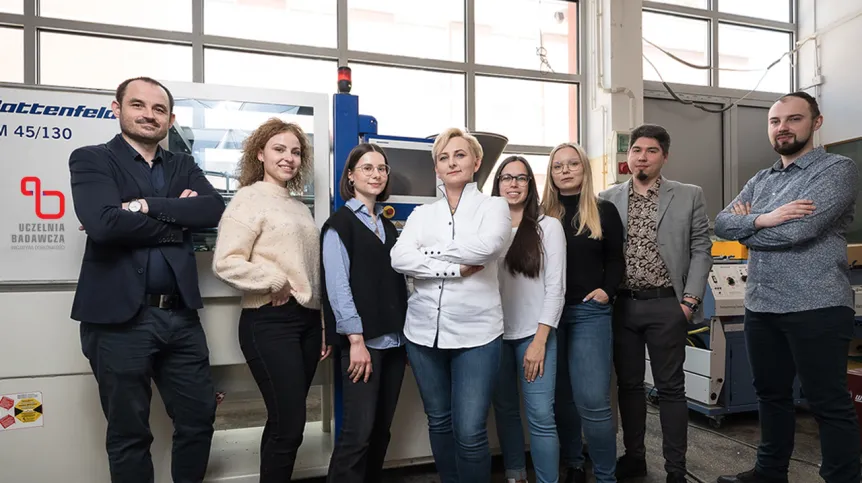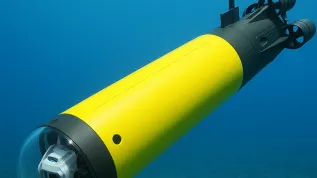
Researchers from the Gdańsk University of Technology are working on materials for creating new types of dressing and implants that release drugs or regenerate tissues. They can be tailored to the needs of a given patient.
According to the team from the Gdańsk University of Technology, in the near future it will be possible to create implants that will disappear after performing their tasks, release drugs straight to the target place, dressings that will accelerate healing with special substances, or scaffoldings for bone and other tissues regeneration.
Such inventions are expected to be created thanks to polymers developed by the team led by Professor Justyna Kucińska-Lipka from the Gdańsk University of Technology.
They will be programmed to break down in the body at a specified rate, and during that time release the appropriate substances and perform other important functions. Others will be durable and work in the body for years.
Professor Kucińska-Lipka said: “We design, model and test polymers with various properties, adjusted to different needs.
“An implant used for bone defect, for example, has to be biodegradable, resorb in the organism over the intended period of time, proportionally to the regeneration of the bone defect. Hip implant, on the other hand, requires completely different properties, it cannot degrade - it needs to be biostable. For both implants, however, our goal is to support the healing process, not only by mechanical implantation, but also by using additional healing substances, e.g. hydroxyapatite. In the case of bone defect implant, the substance can be released while the implant dissolves. The biostable implant, on the other hand, can be covered with hydrogel.”
The researchers use two methods to programme polymer behaviour.
The first method is based on the selection of substances used to make the materials and by strictly determining their proportions. A computer design system helps in this.
Secondly, the researchers select specific 3D printing techniques and parameters used to make the implants.
Kucińska-Lipka said: “There are several types of 3D printing technologies: filament, granulate or polylactide resin using UV light. The same material, subjected to a different technological treatment, can significantly change its properties. We already have confirmed research that in printing with filament, the rate of implant degradation is influenced by the density of the filling. If density of filling exceeds 58%, the degradation time will be proportional to bone healing. The 48% filling is used to create polyurethane dressings for wounds that are difficult to heal. In the case of scaffolds used in regeneration of soft tissues, the filling should be at the level of 25%.”
Her team collaborates with researchers from the Medical University of Gdańsk, for example when creating multilayer hybrid dressings for deep skin lesions or heparin-coated left ventricle assist balloons.
The researchers are also working on a nasal implant used after septoplasty, as well as an implant placed in the nasal sinus after sinus surgery.
Such an implant releases the appropriate dose of steroids and other medicinal substances within 30 days following the surgery and then biodegrades.
The benefits are to be huge. The patient will avoid painful, daily change of dressing, and the tissues will heal faster.
Kucińska-Lipka continued: “Simultaneously, we cooperate with the Faculty of Pharmacy at MUG regarding bioprinting research. We are working on optimisation of hydrogel pads for cell seeding. This research is the basis of Edyta Piłat's doctoral dissertation. The research is carried out in the laboratories at MUG under the supervision of Professor Michał Pikuła from the Laboratory of Tissue Engineering and Regenerative Medicine. Hydrogel bioprints are the future of 3D printing in regenerative medicine. It is already possible to print fragments of soft or cartilage tissues, which, when implanted into the human body, perform the functions of natural tissues.”
All these projects respond to the specific needs of doctors and are expected to be used in the treatment of patients.
The research is conducted in the 'Initiative of Excellence - Research University' projects: Radium and Palladium.
Advanced polymers are among the pillars of the future of medicine.
Kucińska-Lipka said: “Research on biodegradable materials is constantly expanding and opening up new possibilities. It also brings great satisfaction when we discover the properties of a given material, which can subsequently be used in medicine, cosmetology or other industries and simply serve people.”
Find out more here.
PAP - Science in Poland, Marek Matacz
mat/ agt/ kap/
tr. RL













